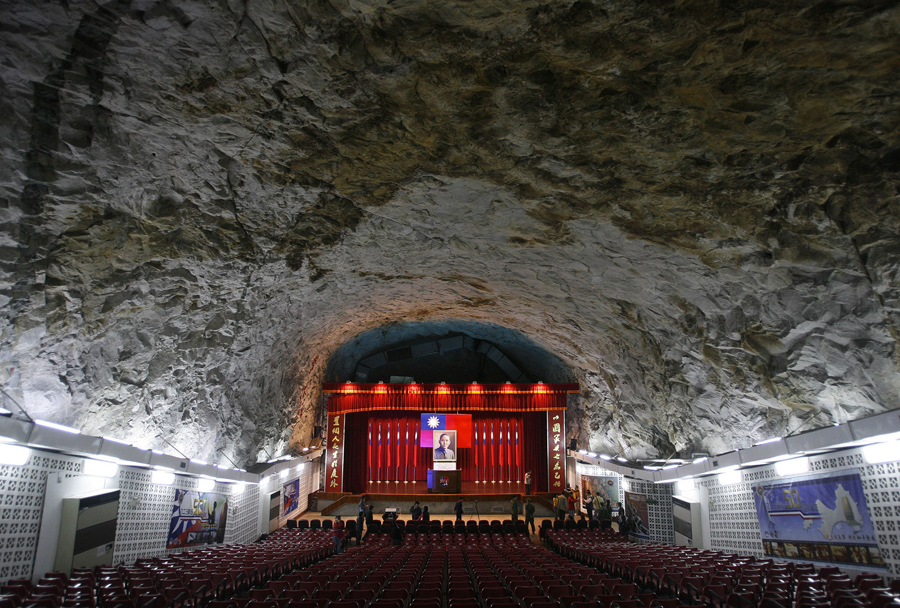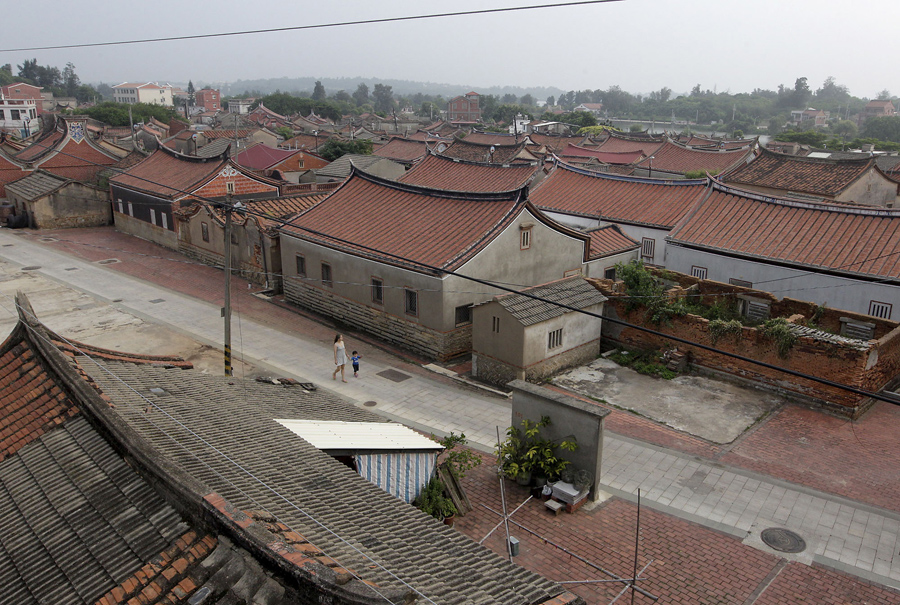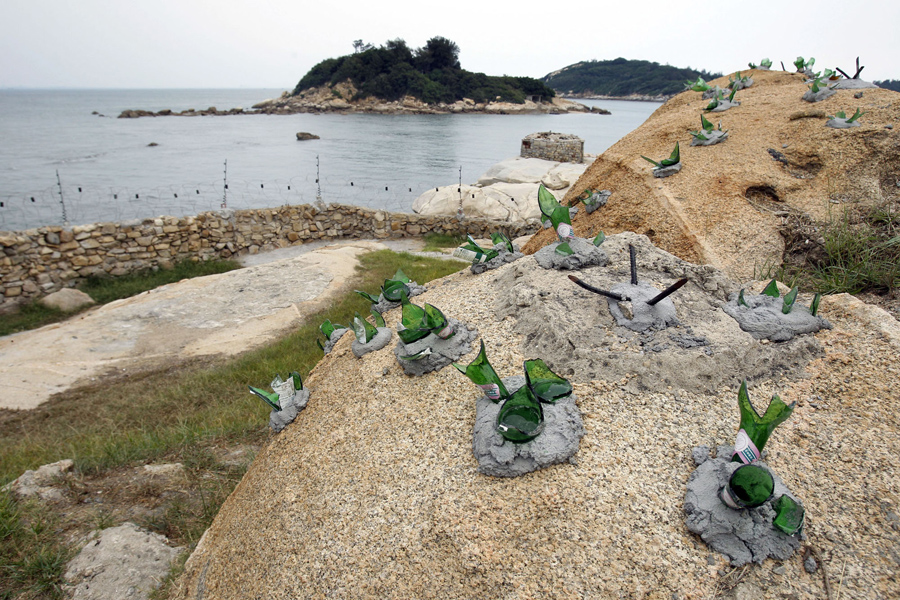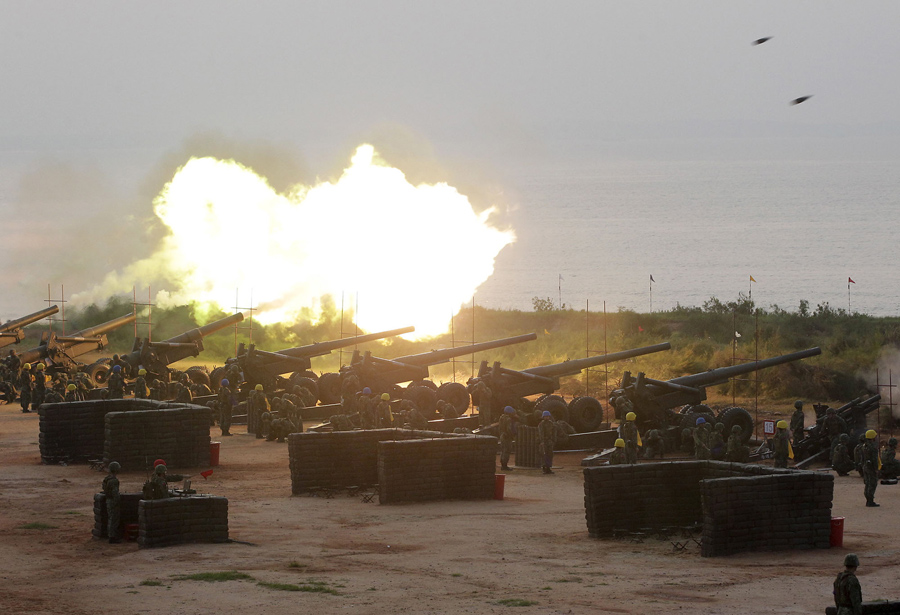The island of Taiwan, governed by the Republic of China (ROC), lies about 100 miles (161 kilometers) east of mainland China, across the Taiwan Strait. Taiwan also administers a number of smaller islands known as the Kinmen archipelago, or Kinmen County. Great Kinmen Island and its neighbor islets are on the other side of the strait, in a harbor just east of the port city of Xiamen, practically surrounded by the People’s Republic of China (PRC)—in some places barely more than a mile apart. Back in the 1950s, the islands were heavily shelled during the two Taiwan Strait Crises—military clashes between the PRC and ROC. The small islands were heavily fortified against bombardment and invasion, with barricades placed on beaches, artillery emplaced on hillsides, massive tunnels dug to shelter troops, and concrete walls of loudspeakers built to blast propaganda across the water. Reuters reports that today, the island of fewer than 129,000 residents is “eyeing closer commercial ties with China,” wanting to pipe water from Xiamen, and “has plans to build a bridge and set up a glittering free trade zone with the city,” as China continues to seek unification with Taiwan under the “one country, two systems” model practiced in Hong Kong and Macau.
 The Chintien hall, inside a cavern, is seen inside the Chintien military base in Kinmen County, on November 25, 2008. Kinmen, which means “Golden Door” or “Golden Gate," is a small archipelago of several islands administered by Taiwan and located near Xiamen, China—no more than 2 kilometers (1.2 miles) away. The island was the site of extensive shelling between Communist and Nationalist forces during the first and second Taiwan Straits Crises. The hall was built as a shelter for military commanders to safely give instructions to soldiers during the shelling from the Communists.Nicky Loh / Reuters
The Chintien hall, inside a cavern, is seen inside the Chintien military base in Kinmen County, on November 25, 2008. Kinmen, which means “Golden Door” or “Golden Gate," is a small archipelago of several islands administered by Taiwan and located near Xiamen, China—no more than 2 kilometers (1.2 miles) away. The island was the site of extensive shelling between Communist and Nationalist forces during the first and second Taiwan Straits Crises. The hall was built as a shelter for military commanders to safely give instructions to soldiers during the shelling from the Communists.Nicky Loh / Reuters A woman collects oysters on a beach near anti-landing barricades in Kinmen County, Taiwan, on September 8, 2015. Rustic Kinmen, with a population of less than 129,000, is a half-hour ferry ride from China, but it takes an hour to fly to major Taiwanese cities.Pichi Chuang / Reuters
A woman collects oysters on a beach near anti-landing barricades in Kinmen County, Taiwan, on September 8, 2015. Rustic Kinmen, with a population of less than 129,000, is a half-hour ferry ride from China, but it takes an hour to fly to major Taiwanese cities.Pichi Chuang / Reuters Shiyu, or Lion Islet, part of Kinmen County, one of Taiwan’s offshore islands, seen in front of Xiamen, China, on September 8, 2015. Just off Kinmen’s shores, glass-walled high-rises wink from the booming mainland port of Xiamen in one of China's most prosperous provinces.Pichi Chuang / Reuters
Shiyu, or Lion Islet, part of Kinmen County, one of Taiwan’s offshore islands, seen in front of Xiamen, China, on September 8, 2015. Just off Kinmen’s shores, glass-walled high-rises wink from the booming mainland port of Xiamen in one of China's most prosperous provinces.Pichi Chuang / Reuters A soldier from a mine disposal unit stands in front of anti-landing barricades along a coast in Kinmen on May 18, 2009. In 2009, Taiwan removed many of its underwater naval barricades and landmines on beaches in the former military outpost of Kinmen for a cross-strait swimming event.Pichi Chuang / Reuters
A soldier from a mine disposal unit stands in front of anti-landing barricades along a coast in Kinmen on May 18, 2009. In 2009, Taiwan removed many of its underwater naval barricades and landmines on beaches in the former military outpost of Kinmen for a cross-strait swimming event.Pichi Chuang / Reuters Wu Tseng-tong, of the Chin Ho-li Knife factory, displays knives he has crafted from recovered artillery shells on August 22, 2011, on the eve of the 53rd anniversary of a massive bombing campaign on Taiwan's Kinmen Island.Wally Santana / AP
Wu Tseng-tong, of the Chin Ho-li Knife factory, displays knives he has crafted from recovered artillery shells on August 22, 2011, on the eve of the 53rd anniversary of a massive bombing campaign on Taiwan's Kinmen Island.Wally Santana / AP A warning sign is displayed on territory lined with landmines on Kinmen Island, Taiwan, on May 18, 2009. Tens of thousands of the mines were first planted back in the 1950s, when this Taiwanese beachhead was subjected to frequent Chinese shelling and war was a constant threat. The Taiwanese military has now cleared an estimated96,000 mines concentrated in 154 fields around the island's perimeter.Chiang Ying-ying / AP
A warning sign is displayed on territory lined with landmines on Kinmen Island, Taiwan, on May 18, 2009. Tens of thousands of the mines were first planted back in the 1950s, when this Taiwanese beachhead was subjected to frequent Chinese shelling and war was a constant threat. The Taiwanese military has now cleared an estimated96,000 mines concentrated in 154 fields around the island's perimeter.Chiang Ying-ying / AP Zhaishan Tunnel, a mostly-completed shelter built for military boats, now a tourist attraction and occasional concert venue.© Google, Inc.
Zhaishan Tunnel, a mostly-completed shelter built for military boats, now a tourist attraction and occasional concert venue.© Google, Inc.





















댓글 없음:
댓글 쓰기